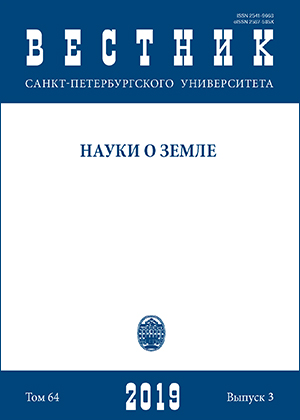Role of borders in the formation of agricultural specialization in the western part of Russia
DOI:
https://doi.org/10.21638/spbu07.2019.301Abstract
The paper discusses the change in agricultural specialization due to various factors. Regional specializations including agricultural within the framework of cyclic-genetic dynamics are under the permanent influence of polycyclism. They pass through the stages characteristic of all economic objects. Specialization of agriculture is formed under the influence of various factors at certain stages. The fluctuations of the weather conditions of the last 30 years are revealed. The importance of the natural component and its role in the formation of areas of sustainable agricultural specialization has been proved. The different influence of weather on the regions of the western part of the Russian border is outlined. The similar features of the response of agriculture to weather in different parts of the western border are highlighted. The instability and flickering boundaries of agricultural specialization are considered as a response to the economic challenges of the time. The influence of the political factor (the factor of the state border and the factor of intra-economic processes) on the modern development of the agrarian specialization of the border areas of the post-Soviet states is shown. The example of some of the most important crops shows the dependence of yield on the weather of this particular year. Examples are given of the cross-border and barrier influence of borders on agricultural production and the formation of personnel.
Keywords:
agricultural specialization, border effect, cyclicity, agro-climatic potential, nature-dependent boundaries, dependence of yield on the natural factor, geopolitical and institutional factors
Downloads
References
References
Downloads
Published
How to Cite
Issue
Section
License
Articles of "Vestnik of Saint Petersburg University. Earth Sciences" are open access distributed under the terms of the License Agreement with Saint Petersburg State University, which permits to the authors unrestricted distribution and self-archiving free of charge.






